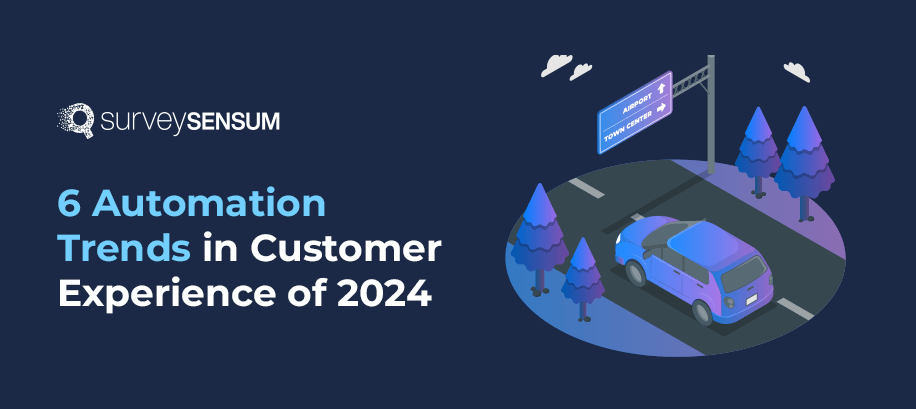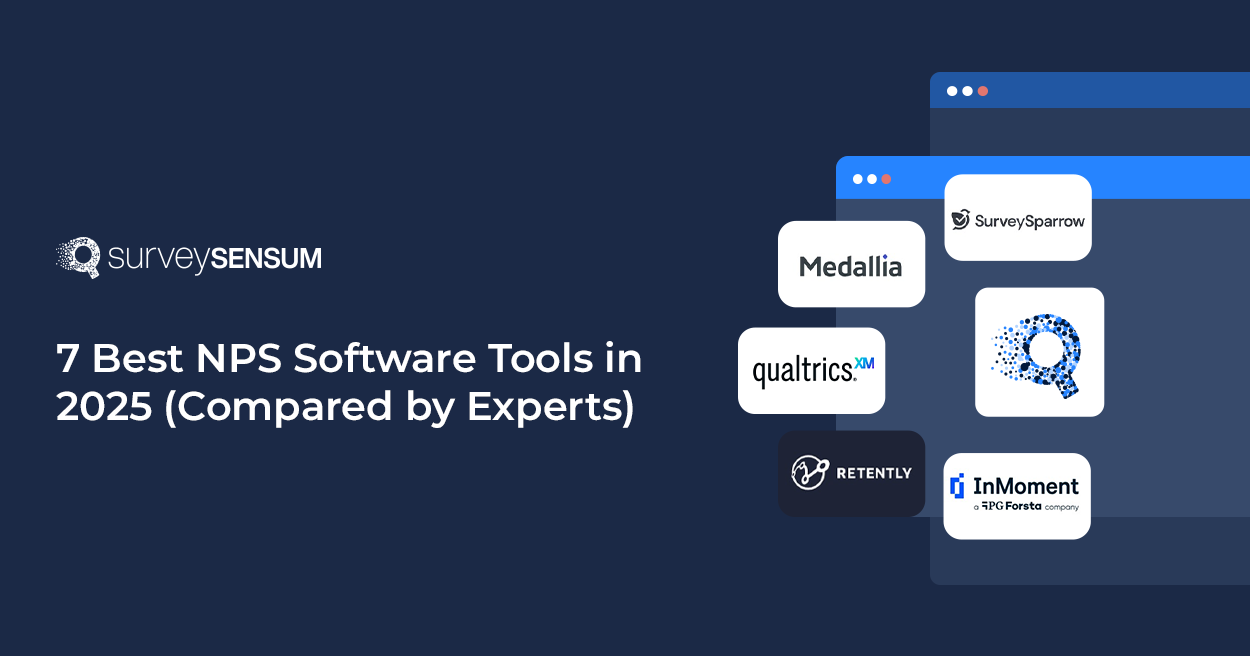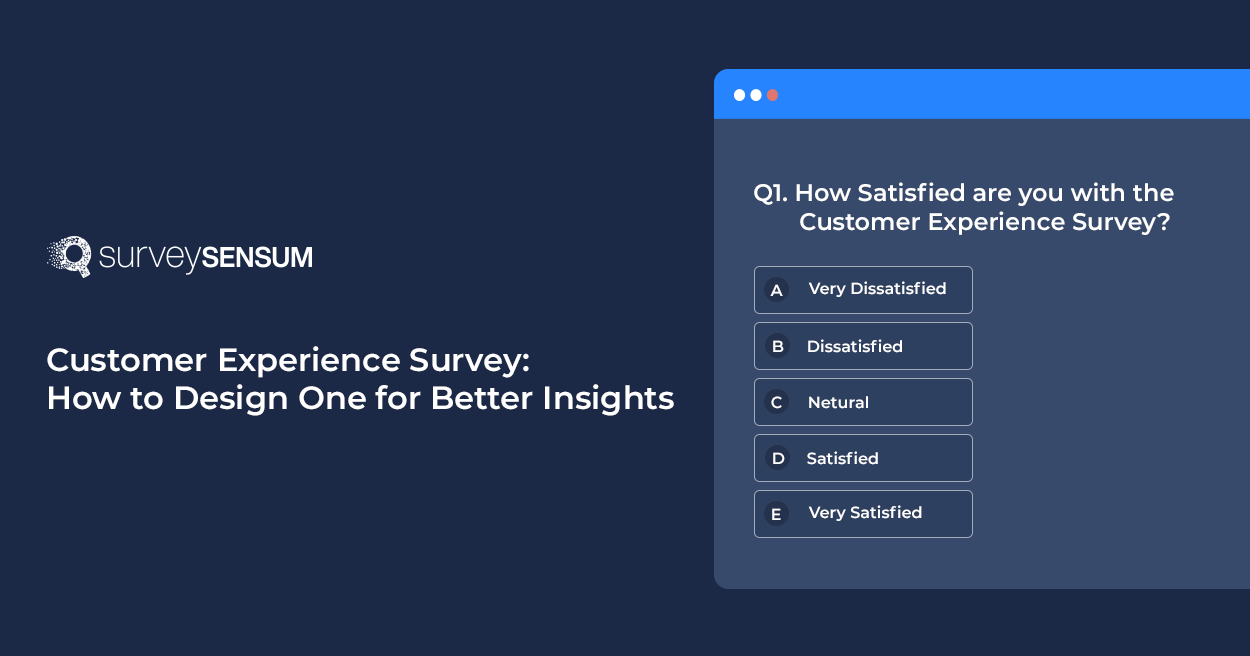

The automotive industry has recognized the importance of offering a seamless customer experience and is evolving by adopting new automotive customer experience trends.
Accenture’s recent study stated that 92% of dealers believe that customer experience will play an integral role in future growth. Additionally, 46% of customers said that they’d switch to a different OEM if it delivered better customer experiences.
These statistics demonstrate the growing importance of providing a positive and personalized customer experience in the auto industry.
Car manufacturers, dealers, and OEMs are utilizing customer feedback tools to understand customer expectations and improve their services accordingly.
To help customers keep up with the latest automotive customer experience trends, we have come up with the top 6 customer experience trends in automotive industry to provide a seamless customer buying journey.
Top 6 Customer Experience Trends in the Automotive Industry
Here are the top 6 customer experience trends in automotive industry to deliver a top-notch customer experience and enhance the automotive customer journey.
1. Digital Presence MATTERS
Over the past few years, two significant disruptions have altered the nature of the car-buying experience to some extent.
- The emergence of the mobile-first generation – who have the purchasing power and prioritize experiences over material possessions.
- The pandemic – which has permanently changed the behavior of customers.
In the post-pandemic era, your customers are constantly looking for a digitized approach to several stages of the buying process.
For instance, just in India, focusing on creating a robust online customer experience can help you tap into 89% of the customers who are buying cars online
Now, digital is a big part of how people buy cars, and businesses need to catch on fast.
In the last two years, dealership visits have dropped by half. People are changing the way they explore and choose cars. That’s why automotive companies need to integrate digital technologies into their operations and build an online presence for their customers.
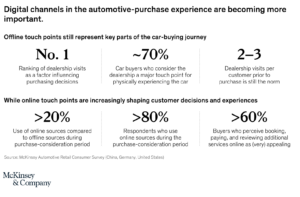
It’s high time, businesses start focusing on their digital channels and tailoring their promotional strategies.
- To start, set up a digital desk at your dealership. Go beyond online bookings and start personalizing the digital and in-dealership experience.
- For customers who are comfortable at home – introduce virtual consultations, online loan processing, online insurance, or online after-market services.
- And don’t forget the power of target capabilities such as custom affinity and life-stage targeting. These tools empower brands to reach potential car buyers with relevant and customized advertisements like never before.
So, embrace this digital shift and drive into the future.
Connect with your audience where they ARE – Online.
2. Possession of Mobility is Changing
Accenture surveyed 7.5K car owners and found that 48% of respondents would consider giving up car ownership in favor of using autonomous mobility solutions.
This shift in the consumer behavior can be attributed to
- Rising costs of car ownership due to inflation affecting costs of maintenance, fuel, insurance, etc.
- Increasing demand for electric vehicles that companies are unable to meet.
As a result, there has been a visible change in consumer trends in automotive industry from Generation Z to Millennials, who opt for ride-sharing, subscription models, and rental services instead of owning a car.
But how to address these downward trends?
Businesses can
- Offer a range of services, including repair and maintenance
- See accessories as per their requirements
- Introduce unique ways of owning and using cars, such as renting and ride-sharing.
However, it is crucial to provide the best possible automotive customer experience to stand out from the competition.
According to a survey conducted by McKinsey & Company, 53% of customers consider a better service experience to be more influential than the actual purchase experience in the entire customer journey.
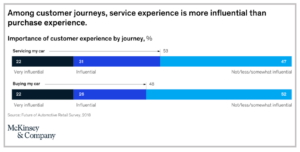
Therefore, it is essential to focus on delivering exceptional customer service and training your team to ensure that they offer satisfactory service.
Listen to the voice of your customers and create a seamless automotive customer experience with SurveySensum’s industry-specific survey templates.
3. Create More CONNECTED Vehicles
By creating vehicles that are more connected, car manufacturers can better serve tech-savvy customers who expect the latest technology in all aspects of their lives.
With the right technology and features, connected vehicles can provide a safer, more personalized, and more enjoyable driving experience, reducing the risk of car accidents and other similar incidents.
In 2018, a slim majority of customers – 55% – considered connected vehicles and advanced systems as the most important CX attribute. Fast forward to 2024, and that number is a whopping 74%. At the same time, we can expect a 15% increase in customers emphasizing sustainability and responsibility.
To not repeat the mistake of NOKIA in the smartphone industry, you HAVE to create vehicles that are more than just a means of transportation. Because the customers expect personalized hubs of advanced technology And that is what you HAVE to deliver!
Here’s how you can do it:
- With IoT telematics, you can connect in real-time with various applications, such as Google Maps, voice control, vehicle performance, and updates. A travel technology company can significantly enhance this connectivity, offering innovative solutions for a seamless travel experience. It enhances the driver experience by improving safety and convenience.
- Thanks to sensors, cameras, and other technologies, vehicles are becoming increasingly aware of their surroundings, alerting drivers to prevent accidents and providing information to make wise decisions during emergencies. This technological advancement complements the foundational skills taught in driving lessons, where drivers learn to respond to their car’s alerts effectively.
- In addition, radar, cameras, and laser scanners on cars help drivers navigate the road by reading it and responding accordingly to avoid obstacles. Car manufacturers like Honda and Suzuki use this technology by offering telematics apps with exclusive features to improve their customers’ safety and convenience.
Remember, you’re not just creating vehicles; you’re innovating them, making them “smarter” to provide the most satisfactory automobile experience for your tech-savvy customers.
4. Changing Preferences to Autonomous Vehicles
If you ask me what are the future trends in customer demands in the automotive industry, I’d say Autonomous vehicles – it’s like the next big thing in trends in customer demands for vehicles!
I’d love to sit in a car that’d take me to my destination managing all the traffic congestion, while I just relax.
These autonomous vehicles are JUST THAT.
It’s like upgrading your journey to a whole new level and the world is moving in the same direction!
The global electric vehicle industry is no small player. We’re talking over $500 billion which is set to significantly grow in the coming years, reaching over $1.5 TRILLION in 2030.
Now that’s some serious growth!
By 2025, we’re looking at a fleet of 77 MILLION electric passenger vehicles globally, up from 20 million in 2022.
Back then, electric vehicles made up around 1.5 percent of the entire global fleet – talk about a revolution!
But with the pros of autonomous vehicles come some limitations as well.
There are also concerns about losing control when everything is automatic.
To address this, the automotive industry can enhance the customer experience by incorporating a human-machine interface (HMI) that allows drivers to interact with their vehicles, calm themselves down, and enjoy entertainment options.
With these enhancements, autonomous vehicles can offer a truly enjoyable and stress-free travel experience.
5. Seamless Key Moments Experience
Let’s talk about delivering a hassle-free and stress-free automotive customer experience.
After all, that’s what every customer wants, right? They don’t want to deal with mistakes and delays.
In fact, many customers prefer to stay loyal to those businesses that offer timely personalized suggestions and updates as part of their customer experience.
This means that providing a personalized experience can help retain customers and attract new ones.
So, how can you offer a seamless customer experience? Well, it’s simple.
- Identify the persona and map the entire customer journey.
- Build relationships with your customers.
- Make sure that they feel heard and valued.
- Offer 360-degree support that should be easily approachable for your customers to reach out to you
- Do not irritate your customers by sending the same message or information constantly
- Create self-service channels that can help your customers sort their issues on their own via FAQs, blogs, chatbots, video tutorials, etc.
And with the rise of digital services, it has become easier than ever to deliver an exceptional customer service experience. Make sure to stay on top of customer trends and preferences.
Keep up with changing customer expectations and needs by launching effective automotive surveys and boost your automotive customer experience TODAY!
Free Forever • No Feature Limitation • No Credit Card Required • Get a Live Demo
6. Roadside Assistance for Your Vehicles
You know the first thing that I looked for when I was buying my car was – Who will be providing the RSA support.
Yes, it is THAT important. You don’t want to be stranded in the middle of nowhere with a flat tire or seized engine AND NO help!
That’s the time you’d WANT someone to just fix your car.
With roughly 1 in 3 drivers experiencing vehicle trouble that requires roadside assistance each year, businesses are finding innovative ways through best ELD devices to offer exceptional support, particularly during unexpected breakdowns.
Many auto companies have recognized the value of offering these services to their customers. If implemented right, they can do wonders for driver safety and satisfaction. By creating a process that is available 24/7, businesses can ensure that their customers receive the help they need quickly and efficiently.
Thanks to digitization and technology, offering these services to customers has become even easier, especially with access to a comprehensive Database of Junkyards in USA that can quickly locate the nearest facility for sourcing replacement parts. With mobile apps and IoT devices, businesses can provide roadside assistance to customers with just a few clicks or taps.
By leveraging these technologies, businesses can improve customer experiences and build brand loyalty.
Conclusion
If you’re in the automotive industry and looking to improve your customer experience, implementing the 6 customer experience trends mentioned above could give you a competitive edge.
Not only will they improve your customer loyalty, but they’ll also help you stay ahead of the curve.
Above all, it’s essential to focus on understanding your customer’s expectations and needs rather than solely trying to sell them a product.
You can increase customer loyalty and retention by offering them exactly what they want and building long-lasting relationships. So, take these 6 customer experience trends into consideration and start offering an exceptional customer experience in the automotive industry. And, if you need help with any of these steps, don’t forget to reach out to us.
Free Forever • No Feature Limitation • No Credit Card Required • Sign Up For Free
Frequently Asked Questions
Customer experience in the automotive industry refers to the overall impression a customer has of their interactions with a car manufacturer, dealership, or automotive service provider. It encompasses every touchpoint throughout the customer journey, from researching and purchasing a vehicle to after-sales service and support. A positive customer experience can lead to increased brand loyalty, repeat business, and positive word-of-mouth referrals.
One of the emerging trends in the automotive industry is the shift towards electric vehicles and autonomous driving technology. EVs are gaining popularity due to their environmental benefits and advancements in battery technology, while autonomous driving technology promises to revolutionize the way we commute by increasing safety and convenience.
Improving customer satisfaction in the automotive industry requires a holistic approach that addresses various aspects of the customer experience. This can include:
- Providing exceptional customer service and support, both online and offline.
- Offering personalized experiences tailored to the individual needs and preferences of customers.
- Ensuring transparency and communication throughout the sales and service process.
- Investing in product quality and reliability to minimize issues and defects.
- Soliciting feedback from customers and using it to continuously improve products and services.
- Embracing technology to enhance the buying and ownership experience, such as digital showroom experiences or mobile service scheduling.
Build Long-Lasting Automotive Customer Relationships With SurveySensum
Free Forever • No Feature Limitation • No Credit Card Required • Get a Live Demo






